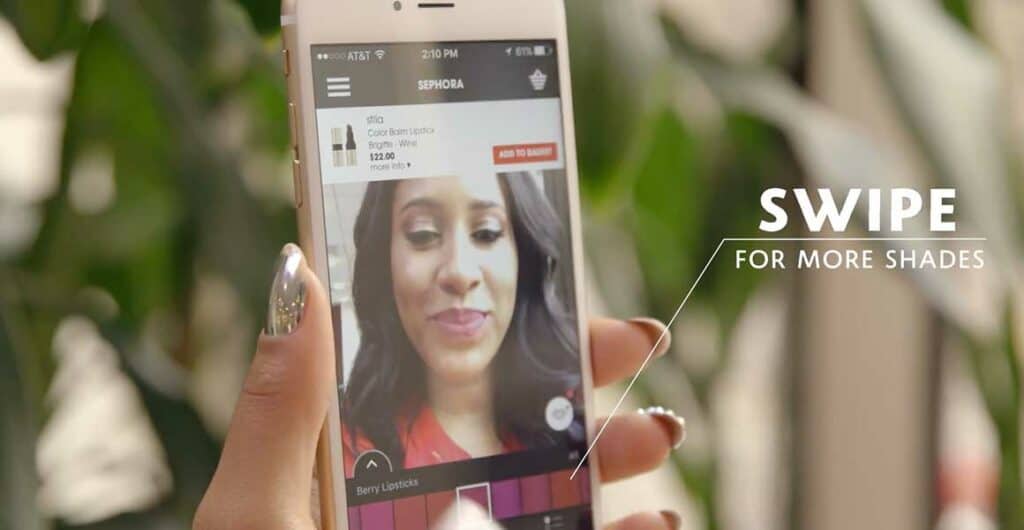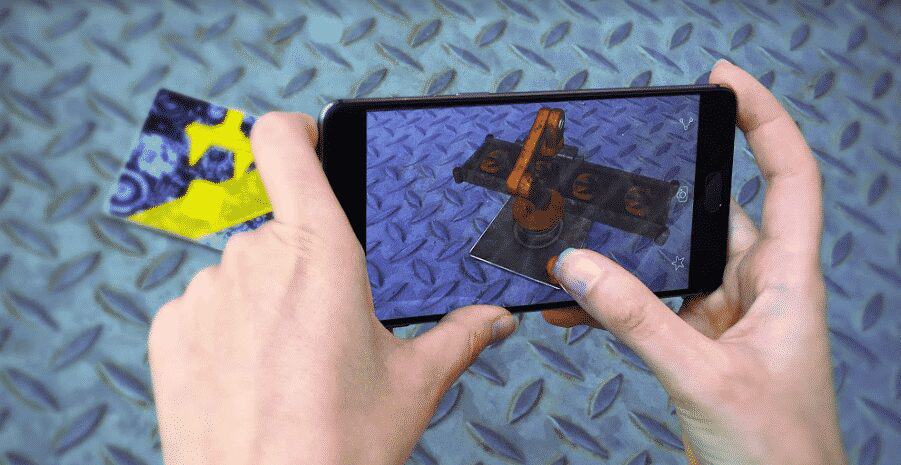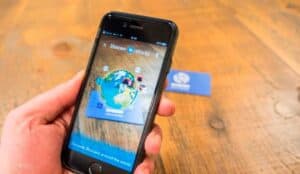New AR apps have been in the news recently with the announcement of an augmented reality app by Shazam. And Blippar just won the “Best App for Virtual or Augmented Reality” at the Global Mobile Awards 2017, hosted by GSMA. These AR apps will not only impact retail but have tremendous potential in education.
While the press is focused on virtual reality, market projections predict that AR will overtake VR in 2018. These apps are just the beginning of a wave of developments.
First a little background. 2016 saw the release of some AR applications – Ikea has been at this for a while and the New Yorker Magazine embraced augmented reality for an amazing issue. AR also staked out a seemingly inevitable claim in the cosmetics industry. With Sephora’s Virtual Assistant, you can try out different shades of lipstick. Move around and the color stays where you put it.

But as you know, one AR app that caught the world by surprise – Pokémon GO. People were wandering the streets searching for Pikachu. Impromptu gatherings took place (sometimes to the consternation of public authorities).
According to a study just presented to the American Heart Association, Pokémon GO players were walking an extra 2,000 steps per day. AR just destroyed the notion of gaming as a sedentary lifestyle.
New AR apps
Shazam just stepped in the AR space with a new AR app that connects artists, musicians and brands. And it has a number of advantages given the music app’s has a huge reach. Shazam has been downloaded over 500 million times and has a 100 million active users. Growth? They’re adding 10 million users a month. If you need to identify a song, Shazam’s almost always has the answer. I find myself using it just to look up lyrics to songs I already know.
Shazam released a limited visual recognition system back in 2015. The new app
. . . is taking things to the next level with AR features that promise to ‘bring any marketing materials to life,’ including advertisements, packaging, and other physical objects, through scanning mini Shazam ‘codes.’ In terms of the kind of content users can unlock through Shazam, well, it could be anything from 3D animations to games and product visualizations. (UpLoadVR)
Shazam’s app has the potential to pull augmented reality out of gaming and into our everyday lives. Using graphic design as keys to trigger music and the work of artists is a whole new world for advertising.
AR as a visual browser

The other company leading the way with new AR apps is the London based Blippar. They’ve done commercial work, a VR app, and they’re developing an expanding database of everyday objects that are instantly recognizable. Like Shazam, it’s a frictionless experience, but Blippar is moving away from using codes for object recognition. As Cofounder and CEO Ambarish Mitra put it,
And why should I need to recognize an ugly square when I can recognize something on its own?”
You can download the app now and it will recognize objects in your home. Of course, it doesn’t get everything right – of two stuffed animal toys in my house one was recognized as a Persian cat (close), the other as fur clothing (not quite). But interesting, my living room was seen as a “Study Room” (no doubt due to the books and papers lying around).
Ambarish Mitra, who went from a Delhi slum to billionaire founder of a startup, is deeply committed to education. His goal is “. . . to create a knowledge graph of everything in the world.”
Obviously, that’s a long road to travel. My living room should be recognized as more than a “Study room”. It’s part of a building built in the late 19th century in New York, with a design that was responding to the social reform movements of that era. And it has a lot more history that could be pulled from incorporating geo-location and AI.
But Blippar is on the way to becoming a full-fledged visual browser. And with their recent release of a suite of developer tools for consumers in BlipBuilder, it becomes easy to create your own AR environments.
If retail will leverage AR tools for customer engagement, the developments open a world of possibilities for educators.
AR by the end of 2017
As you might surmise, there’s still a critical missing piece here. A functional wearable device so that we don’t have to hold up our phones to objects. Shazam, Blippar and other AR apps will take off when Apple or Google (yes, we’re waiting for Glass 2.0) delivers on the hardware side. We fully expect to see something by the end of the year.
In the not too distant future, we may no longer assign a text but an augmented reality app that pulls up resources no matter where you.
It’s pointing out the obvious to say that science, history, biology, and art are all around you. Printed books brought the world into our classrooms; AR will bring the classroom back out into the world.

Emory Craig is a writer, speaker, and consultant specializing in virtual reality (VR) and generative AI. With a rich background in art, new media, and higher education, he is a sought-after speaker at international conferences. Emory shares unique insights on innovation and collaborates with universities, nonprofits, businesses, and international organizations to develop transformative initiatives in XR, GenAI, and digital ethics. Passionate about harnessing the potential of cutting-edge technologies, he explores the ethical ramifications of blending the real with the virtual, sparking meaningful conversations about the future of human experience in an increasingly interconnected world.

